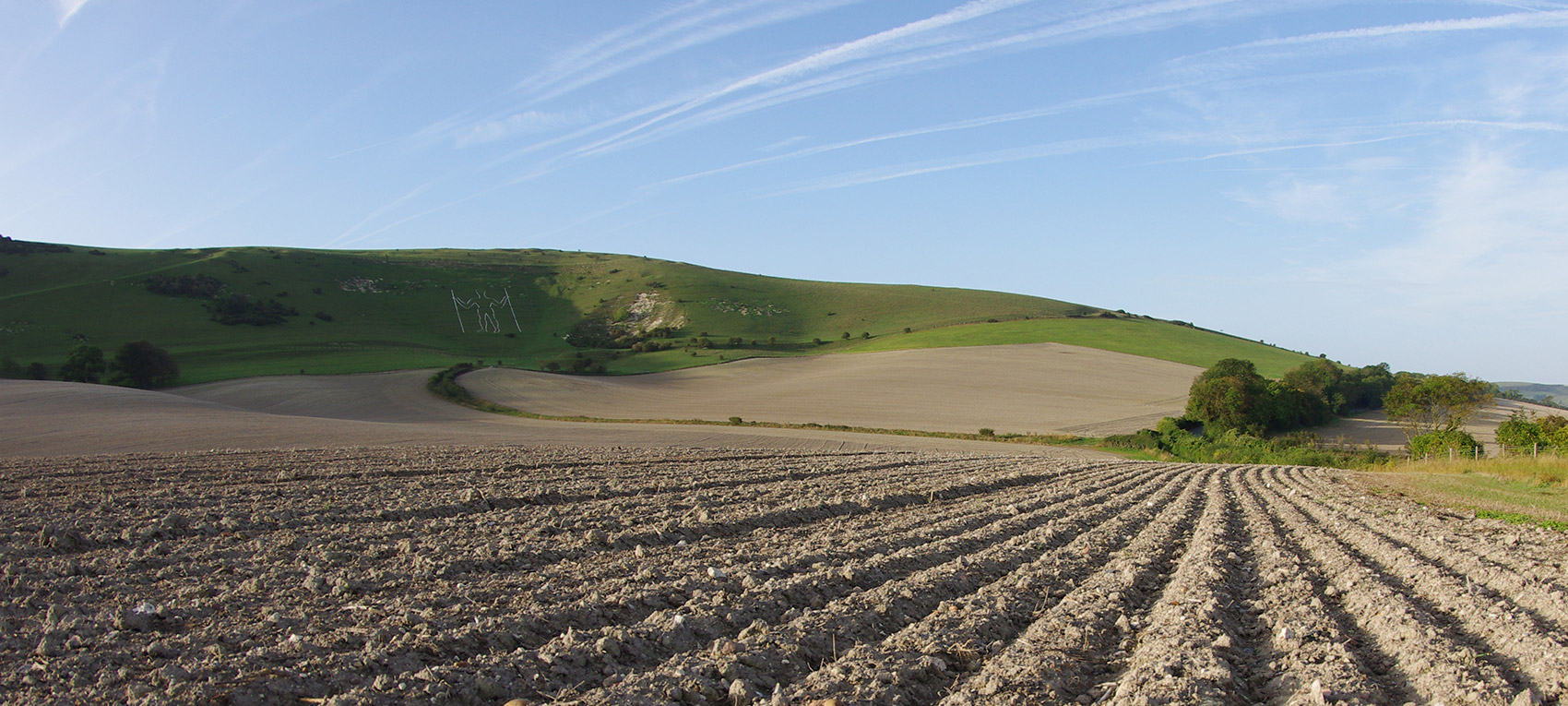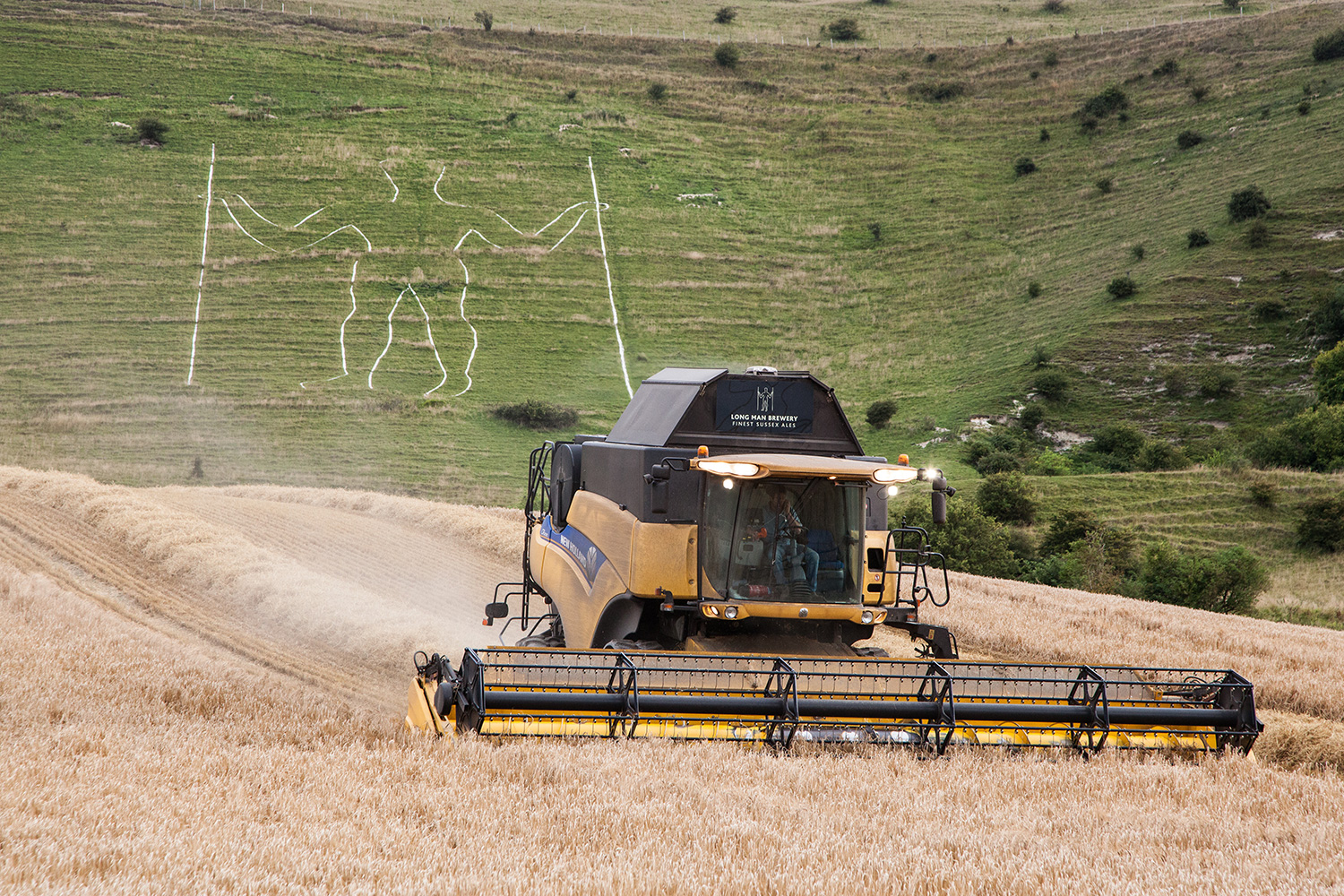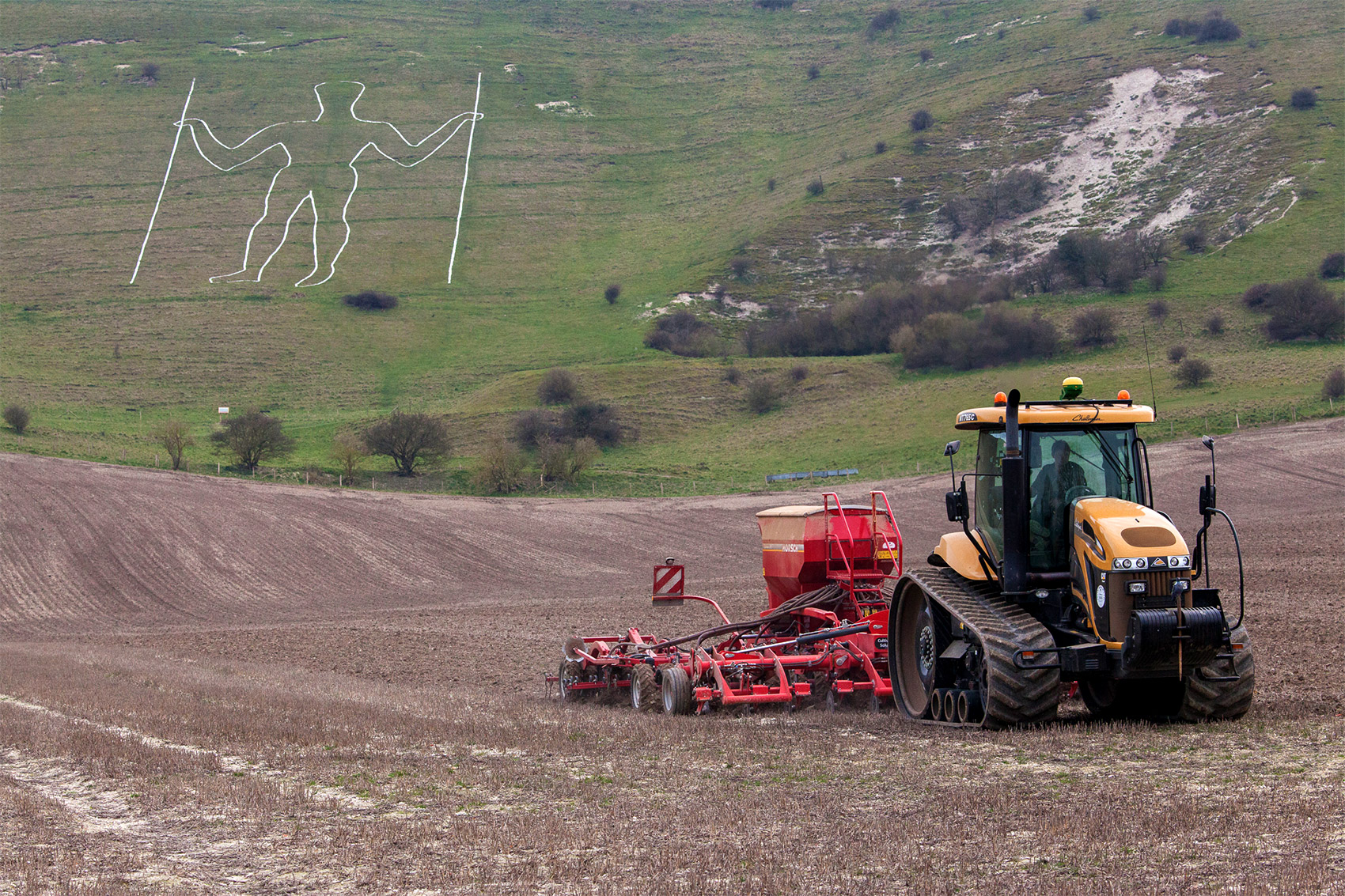
The Long Man
Not far from our brewery at Church Farm you’ll find The Long Man of Wilmington, also sometimes referred to as The Wilmington Giant, an imposing figure cut into the the steep slope of Windover Hill, facing roughly north towards the Weald. At 226 feet (68.9 meters) it’s one of largest representations of a human figure to be found anywhere in the world and a major local landmark, and it’s from this figure that the brewery takes its name.
The Long Man holds what appear to be long staves in each hand, leading to much speculation about what the figure is meant to represent. Historical facts are at best rather sketchy and the figure has evidently been altered on more than one occasion over the years, partly in the interests (not always for the better) of preservation as grass would have grown over the original outline which was formed from packed chalk. Interestingly, the figure’s name may well derive from the fact that in reality the figure is longer than it looks. When viewed from the air the figure is visibly taller and thinner as it was constructed to appear in the correct human proportions when seen from ground level.
Historical drawings
Various drawn records exist and most vary to some degree, which only serves to add to the mystery of how the Long Man came into being. At one time the figure was believed to have been first carved in the Iron Age, or possibly even earlier during the Neolithic period, but recent archaeological work strongly suggests that the figure was created during the 16th or 17th centuries. For some time it was thought that the earliest visual record was a drawing created by a William Burrell in 1776 during a visit to the nearby Wilmington priory. This drawing depicts the figure holding a rake and scythe, an indication that the figure has some agricultural meaning, and although there is evidence to suggest this was at one time the figure’s true appearance contemporary research indicates that the depiction may simply be a fanciful interpretation. This is backed up by the 1993 discovery in the Devonshire Collections at Chatsworth House of an earlier drawing by the surveyor John Rowley dating from 1710 which shows a figure looking much more like the version we can see today. There are differences – the feet both face outwards whilst today the left foot faces roughly forward, and there are facial features portrayed which have presumably since been lost – but the outline is broadly similar.
Alterations through the ages
In 1873-4 the figure was scoured clean and outlined using yellow bricks by a group led by the Rev. William de St. Croix, a member of the Sussex Archaeological Society. The project was funded by the Duke of Devonshire who owned the land at the time. Whilst the use of bricks instead of chalk may seem rather at odds with the idea of a chalk figure, they certainly provided a more permanent solution to the problem of preserving the figure’s outline, although this ‘restoration’ is cited as a significant contribution to the distortion of the original figure’s shape. In 1891 the yellow bricks were replaced with white bricks, and during the Second World War the bricks were painted green to prevent the figure being used as a landmark by enemy aircraft. These bricks were finally replaced in 1969 by concrete blocks which form the current outline.
Moving forward to the 21st century, as well as its significance as a landmark on the many walks which criss-cross the Downs and pass through the Cuckmere Valley, the Long Man is visited at dawn every May Day by the Long Man Morris Men who dance at the figures feet. Neo-pagan rituals are also held on the Sundays closest to each of the eight Pagan Festivals traditionally held throughout the year.

